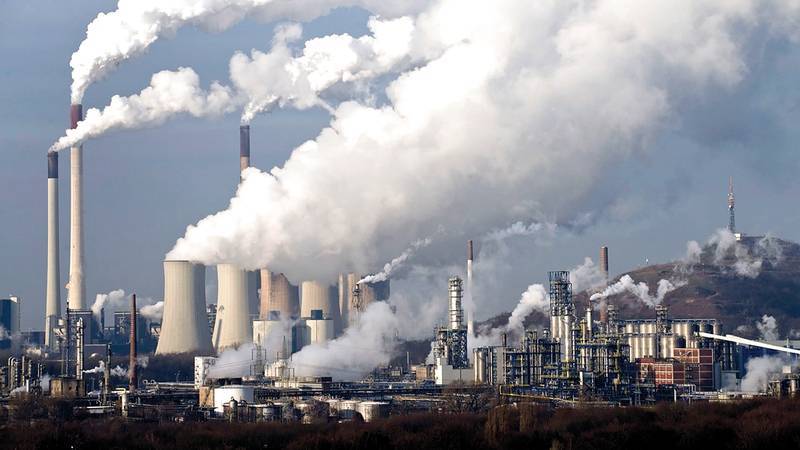The United Nations Climate Change Conference this year will take place from November 30 to December 12 in Dubai. This marks the twenty-eighth meeting of world leaders to confront the phenomenon of global warming since the first "Conference of the Parties" (COP) in 1995. However, the world has been aware of the existential threat posed by climate change, primarily due to the burning of fossil fuels, for much longer. Below are key milestones in the history of climate talks:
**19th Century** - For about six thousand years before the industrial era, global levels of carbon dioxide in the atmosphere remained around 280 parts per million. Many European scientists began studying how various gases trapped heat in the atmosphere. In the 1890s, Swedish scientist Svante Arrhenius calculated the temperature impact of doubling atmospheric carbon dioxide levels, explaining how burning fossil fuels would lead to increased global temperatures.
**1938** - By compiling historical weather data, British engineer Guy Callendar was the first to demonstrate that modern temperatures were rising. He linked temperature trends to measured increases in atmospheric carbon dioxide, indicating a correlation.
**1958** - American scientist Charles David Keeling began a systematic measurement of atmospheric carbon dioxide levels at the Mauna Loa Observatory in Hawaii. His results produced the "Keeling Curve," a graph showing a steady increase in carbon dioxide concentrations.
**1988** - American climate scientist James Hansen testified before Congress, stating that Earth’s temperature was rising due to greenhouse gases from industrial activities, indicating that this was already changing climate and weather patterns.
**1990** - In what was called the second United Nations conference on climate change, scientists highlighted the dangers of global warming on both nature and society. British Prime Minister Margaret Thatcher emphasized the need for binding emission targets.
**1992** - Countries signed the United Nations Framework Convention on Climate Change at the "Earth Summit" in Rio. The aim of the agreement was to control emissions to prevent severe climate change, establishing the idea of "common but differentiated responsibilities," meaning developed countries should do more because they are responsible for most historical emissions. The Rio Summit set negotiation paths to protect biodiversity and other environmental goals.
**1995** - Members of the framework convention held the first "Conference of the Parties" (COP) in Berlin. The final document from the meeting called for legally binding emission targets.
**1997** - At COP3 in Kyoto, Japan, parties agreed that developed countries would reduce emissions, setting varying limits for different countries. Prominent Republicans in the U.S. Senate condemned the agreement, labeling it "dead on arrival."
**2000** - After losing the U.S. presidential election, Al Gore began giving lectures worldwide on climate science and policy, culminating in the 2006 documentary "An Inconvenient Truth," which later won an Oscar. Gore and the Intergovernmental Panel on Climate Change received the Nobel Peace Prize.
**2001** - U.S. President George W. Bush took office and described the Kyoto Protocol as "fatally flawed," a rejection that effectively meant the U.S. would withdraw from the agreement.
**2005** - The Kyoto Protocol came into effect after Russia ratified it, meeting the requirement of ratification by at least 55 countries representing at least 55% of emissions.
**2007** - Participants at COP13 in Bali agreed to work on a new binding agreement that would include both developed and developing countries.
**2009** - COP15 talks in Copenhagen nearly collapsed amid disputes over binding targets as the Kyoto Protocol was set to expire. Instead of establishing a new framework as proposed by the Bali roadmap, countries voted to "take note" of a non-binding political statement.
**2010** - COP16 in Cancun, Mexico again failed to set new binding emission targets but resulted in the establishment of the Green Climate Fund to help developing countries adapt to global warming. It set a target to limit warming to two degrees Celsius above pre-industrial levels.
**2011** - COP17 in Durban, South Africa faced setbacks as China, the U.S., and India refused to sign binding emission reductions before 2015. Instead, parties agreed to extend the Kyoto Protocol until 2017.
**2012** - After Russia, Japan, and New Zealand resisted new emission targets excluding developing countries, COP18 in Doha resulted in an extension of the Kyoto Protocol until 2020.
**2013** - At COP19 in Warsaw, representatives from the world's poorest countries withdrew for several hours due to a lack of agreement on how to deal with losses and damages associated with climate change. A watered-down agreement was eventually reached. Meanwhile, atmospheric carbon dioxide levels surpassed 400 parts per million for the first time in recorded history.
**2015** - Global warming exceeded one degree Celsius above pre-industrial levels. The climate talks at COP21 yielded the Paris Agreement, the first global pact urging emission commitments from both developed and developing nations, which were asked to pledge nationally determined contributions, with targets to be raised every five years. Delegates committed to trying to limit Earth's temperature rise to 1.5 degrees Celsius above pre-industrial averages.
**2017** - U.S. President Donald Trump described the Paris Agreement as harmful to the economy and announced that the U.S. would withdraw, which became official in 2020.
**2018** - Teenage activist Greta Thunberg garnered global attention by protesting outside the Swedish parliament, eventually mobilizing youth worldwide to join her "Fridays for Future" movement calling for climate action.
**2019** - United Nations Secretary-General António Guterres criticized the lack of ambition at COP25 in Madrid.
**2020** - The annual COP conference was postponed due to the COVID-19 pandemic.
**2021** - One of the first actions taken by U.S. President Joe Biden after taking office was to rejoin the Paris Agreement. Later that year, the final outcome of COP26, the Glasgow Pact, aimed to reduce coal usage and finalize rules governing carbon credit trading to offset emissions.
**2022** - COP27 in Sharm El-Sheikh, Egypt resulted in a historic agreement to create a loss and damage fund to address costly climate-related disasters, but it did little to address the emissions fueling such disasters.




